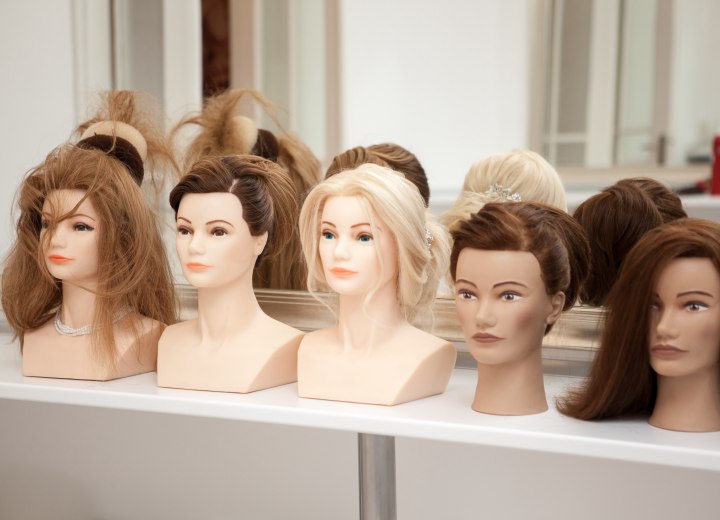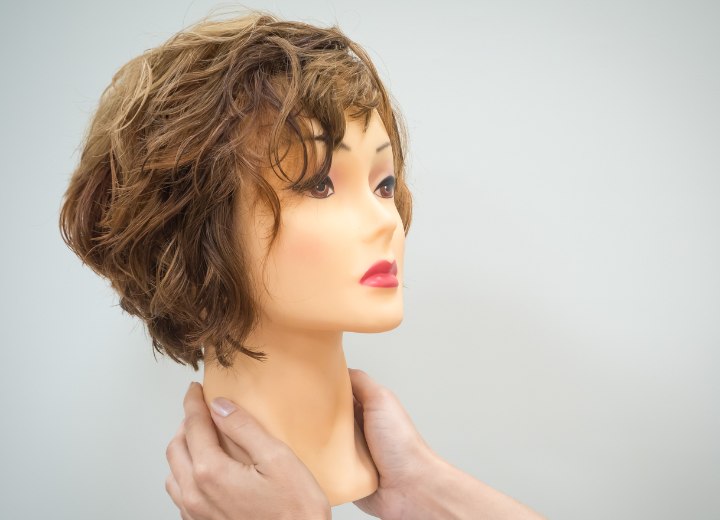Haircutting Manikin / Mannequin Basics

Most of us have probably heard the term "mannequin" used before, and when you hear mannequin, you probably think of the life-sized dolls of men, women, and children in department stores and clothing boutiques upon which different fashions are displayed. These are mannequins, but they’re not the only type.
The dictionary defines mannequin as: "1. A life-size full or partial representation of the human body, used for the fitting or displaying of clothes; a dummy. 2. A jointed model of the human body used by artists, especially to demonstrate the arrangement of drapery (Also called lay figure.) 3. One who models clothes; a model." So, you can see that the term has a broader meaning.
That’s the area we’re looking at today. In haircutting, a manikin is an anatomical representation of the human head with hair implanted to fall as human hair would do. These manikins are used to train stylists how to manage the hair for cutting, styling, chemical processing, etc.
Manikins allow the student to practice important techniques without having to worry about causing harm or damaging the hair of a live person. They can help a student build their proficiency and gain confidence before having to work with a live customer.
Of course, what is referred to in one place as a manikin may be called any number of things in regional terminology or according to general preferences. You may hear them referred to as "training heads", "practice heads", "dummy heads", "manikins", "hair dolls", or "styling dummy". There may be even more terms in use in some areas, but generally, any professional or instructor will recognize the term “manikin” regardless of the commonly used term in his or her area.
Hairdressing Manikins
The choice of hairdressing or hairstylists’ manikin is often a tough one. The manikins are often available in differing varieties, with options in gender, age presentation, presence or absence of facial hair (in male manikins) and most commonly in hair length and color. And with the number of options these variations present, they’re still only a part of the equation. The other major consideration in manikin choice is the material from which the manikin is made.
The vast majority of the manikins available on the market today are made from some kind of naturally produced hair fiber. However, some use synthetic fibers as well. The source of the fibers, as well as the way in which they are prepared and implanted in the manikin determine the usefulness of the manikin for different practices.
The obvious fiber source used in manikins is human hair. This hair is often grown by and harvested from women in impoverished countries as a means of income for their families. Sometimes entire families, even entire communities, work in this endeavor, creating industry centers such as the Temples in India that produce highly-prized Remy hair for wigs and hair extensions.

Once harvested, the hair is either sorted, washed, and sanitized, or processed for uniformity and sanitized according to the quality grade of the end product. It’s this quality grading that determines the end cost and suitability of the manikin for different uses.
For manikins of high quality, the hair is going to be kept as natural as possible, and will be considered "virgin hair" in its finished form. This means that the hair will not have been exposed to any chemical processing of color or texture. These manikins are ideal for advanced students who are ready to work with high-end color and perming techniques.
The next step down in quality is those manikins that are human hair, and are only processed to create a more uniform color result. The hair is bleached to a uniform lightness level. These manikins are suited for use in the same ways as the premium quality manikins (i.e. perming), but the student needs to be aware that the hair has been colored/bleached previously when performing additional color services.
Continue reading ...